Have you ever walked into an art gallery and been struck by a sense of awe? Has the stroke of a brush on canvas ever stirred deep emotions within you? Or perhaps you’ve marveled at how a piece of sculpture seems to spring to life? The magic lies not only in the art itself but also in an often overlooked detail – the lighting.
Art gallery lighting is a critical aspect of presenting and experiencing art. It’s the delicate dance of light and shadow that highlights textures, reveals colors, and sets the mood for each piece. Art gallery lighting isn’t about flooding a room with illumination, but about finding the perfect balance – enough light to reveal the details, but not so much that it overpowers the art. It’s about creating an environment where the art can take center stage, and visitors can connect with it on a profound level.
Intrigued? Let’s delve deeper into the fascinating world of art gallery lighting.
What is Art Gallery Lighting?
Art gallery lighting refers to a specialized approach to illumination design, specifically tailored for art galleries and museums. This unique lighting philosophy is designed to not only showcase artworks in the best possible light but also to protect them from potential damage caused by improper lighting. Art gallery lighting marries science with aesthetics, influencing how viewers perceive and interact with the artworks, and shaping their overall gallery experience.
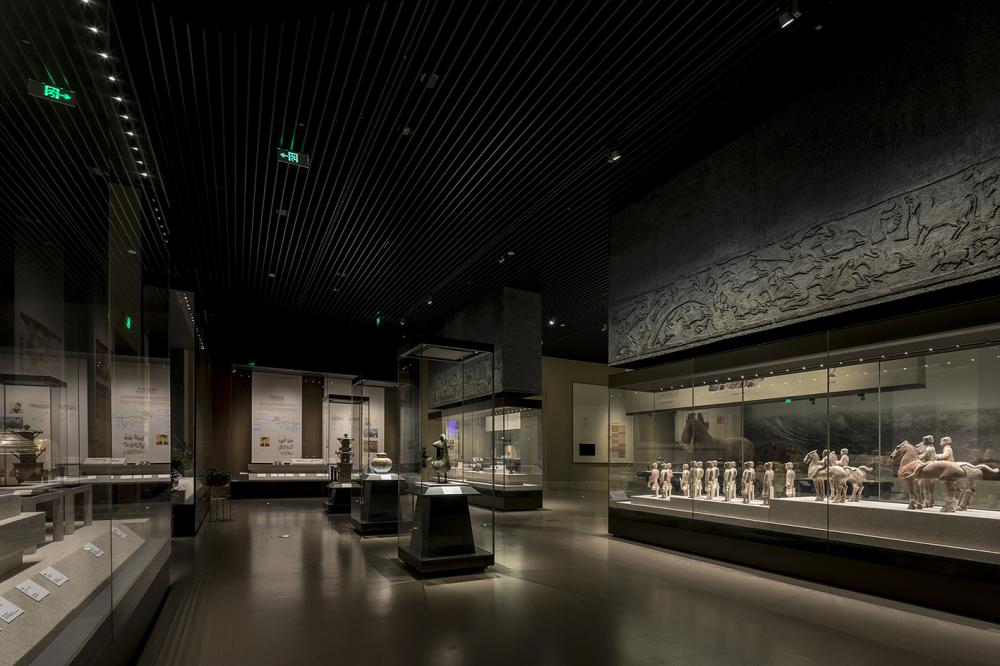
Why is Art Gallery Lighting so Crucial?
Art is intrinsically visual, relying not just on the skill of the artist, but also on the perception of the viewer. As such, the illumination provided by light plays a pivotal role in the interpretation and appreciation of the artwork. Proper lighting can enhance the viewer’s experience, directing their focus, revealing subtle nuances, and influencing their emotional response. It can accentuate the artwork’s strengths and minimize its flaws, making it more appealing and compelling to the audience.
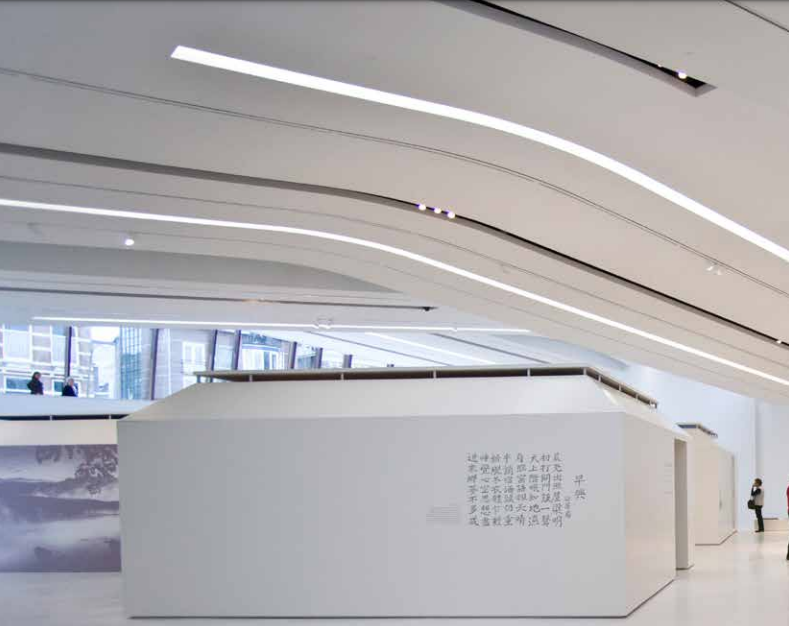
Art gallery lighting is an essential aspect that often transcends the realm of mere illumination. It is a strategic tool that can significantly influence how viewers perceive and appreciate the artwork. Several factors contribute to its importance:
Aesthetic Enhancement: Proper art gallery lighting brings every inch of an artwork into the viewer’s notice, precisely as the artist intended. It brings out the depth, color, and intricate details of each piece, offering viewers the chance to appreciate the nuances that the artist intended to convey. For instance, side lighting might reveal the texture of an oil painting that could be lost under the direct overhead light. Improper or inadequate lighting can cause viewers to overlook these fine details, thereby diminishing their overall experience.
Emotional Influence: The type and arrangement of lighting can evoke certain moods or feelings in viewers, thereby enhancing their emotional connection with the art pieces. For example, a dramatic spotlight on a sculpture can create a sense of awe and wonder. Warm lighting might evoke feelings of comfort and nostalgia, while cool lighting might present a modern and tranquil vibe.
Guidance and Focus: Lighting can be used to guide visitors through an art gallery, emphasizing specific artworks or features while subtly steering viewers away from less significant areas. This strategic deployment of light becomes critical in larger galleries, where the sheer volume of art might otherwise overwhelm visitors.
Artwork Preservation: Art gallery lighting is also crucial for the preservation of artworks. Some types of lighting, such as those with high UV levels, can cause artwork to fade or degrade over time. Therefore, selecting the right type of lighting is key to ensuring the longevity of the pieces on display. This is particularly relevant for older, more delicate works that can be particularly sensitive to certain types of light.

Creating a Signature Atmosphere: Every art gallery aims to create a unique atmosphere that leaves a lasting impression on its visitors. This can often be achieved through a distinctive lighting setup. The lighting design can reflect the gallery’s personality, its curatorial style, and even the themes of its current exhibits. For instance, a gallery focusing on contemporary art may use bold, dynamic lighting, while a gallery showcasing classical paintings may prefer a more subdued, traditional approach. This helps to make each visit to the gallery a unique and memorable experience.
In summary, art gallery lighting is much more than a functional necessity. It is a vital element of the gallery’s overall presentation and plays a pivotal role in how viewers perceive and interact with the artworks on display.
What are the Different Types of Art Gallery Lighting?
Art gallery lighting relies on a combination of different types of lighting to create a cohesive, engaging, and safe environment for the viewers. There are primarily three types of lighting used in art galleries: ambient lighting, task lighting, and accent lighting, each serving a distinct purpose. Let’s explore these types and how modern LED lighting fixtures can be used to achieve them.
Ambient Lighting
Ambient lighting provides overall illumination for the gallery space. This baseline level of light ensures that visitors can safely navigate the gallery. Ambient lighting can be achieved using Surface-Mounted LED Downlights or Adjustable Recessed Lighting fixtures. These lighting types offer a clear, consistent light source that illuminates the space without any glare. They also create a cooler atmosphere within the gallery as they generate minimal heat.
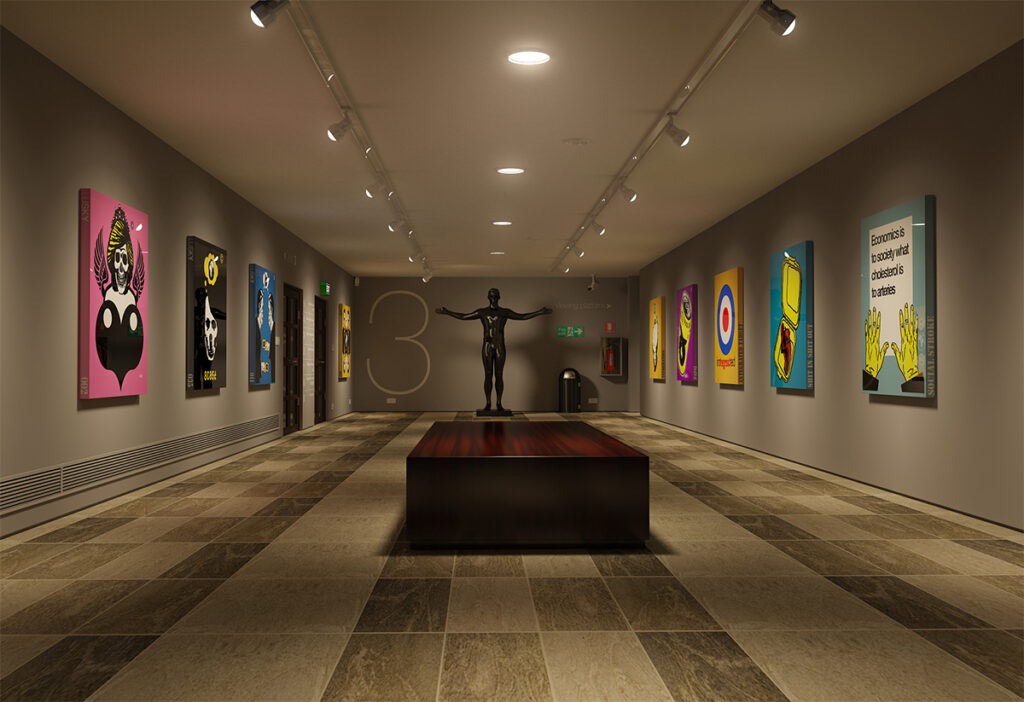
Task Lighting
Task lighting serves specific functions in an art gallery, such as illuminating reading labels or brochures. This type of lighting requires fixtures that can be focused on specific areas, for which LED Track Lighting can be an excellent option. Track lights are space-efficient and can be easily adjusted to focus on different areas as needed.
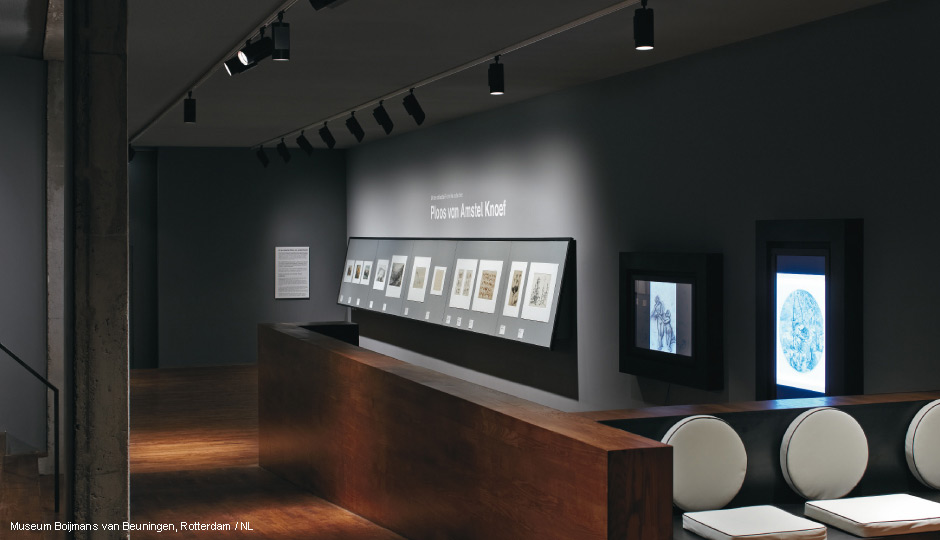
Accent Lighting
Accent lighting is critical in an art gallery. It is used to highlight the artwork, drawing attention and creating drama. LED Spotlights are often used for this purpose as they focus intensely on a single piece of art. They help emphasize certain elements of an artwork, drawing the viewer’s attention to specific details.
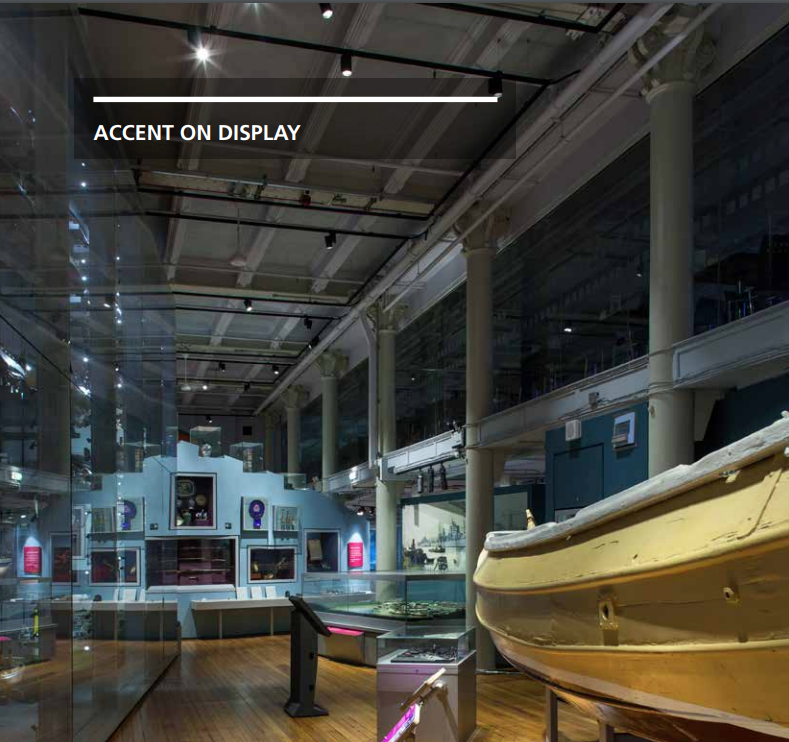
Another option for accent lighting is LED Wall-Washers. Rather than spotlighting individual artworks, wall-washers create a wash of light over the entire display surface. This can create a dramatic effect, especially when used on large artworks or installations.
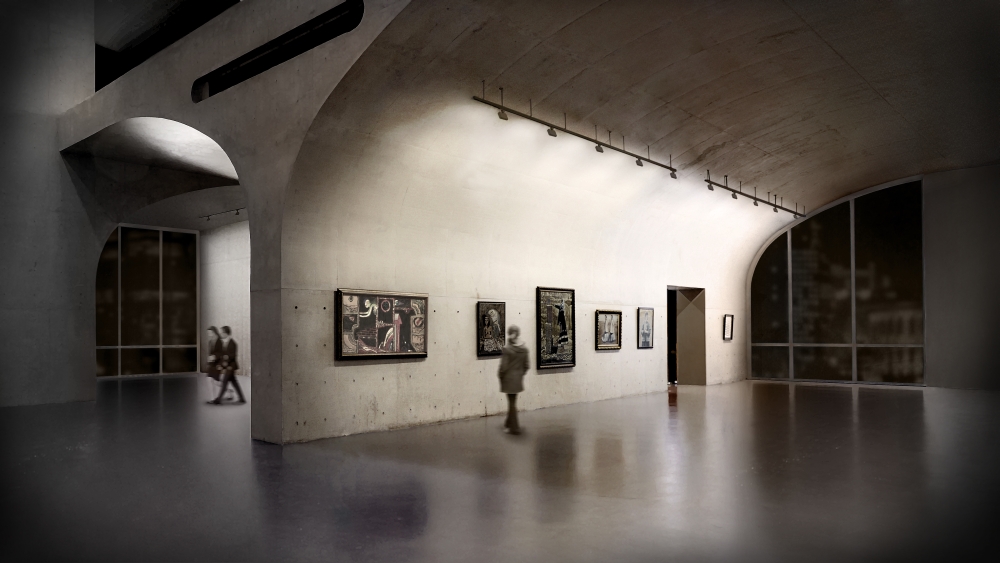
In conclusion, the combination of functional lighting types and modern LED lighting fixtures allows art galleries to create a rich, immersive environment for viewers. By carefully selecting and positioning lighting fixtures, galleries can highlight the beauty of their artworks while ensuring a comfortable and safe space for visitors.
How to Choose the Right Art Gallery Light Fixtures?
Choosing the right fixtures for art gallery lighting involves understanding the types of bulbs, adaptability of the lighting system, blending of lights, energy consumption, design aesthetics, and the Color Rendering Index (CRI). All of these factors must harmonize with the artwork’s form, size, positioning, and the overall design of the gallery. Remember, the goal is to complement the artwork and create the optimal conditions to appreciate each piece without overshadowing it.
Types of Bulbs: Different types of bulbs, such as LED, Halogen, and Incandescent, provide varied levels of energy consumption, aesthetics, and ambiance. LED bulbs are often favored due to their energy efficiency, longevity, and a range of color temperatures. They also emit minimal UV radiation, reducing potential light-induced degradation, particularly for sensitive materials like textiles, photographs, and paper.
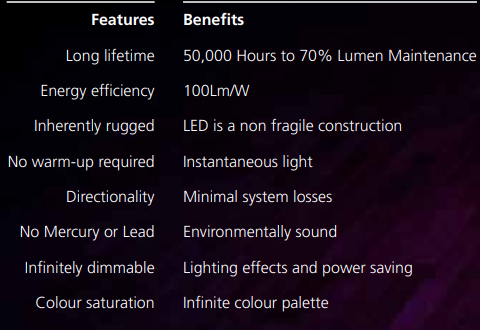
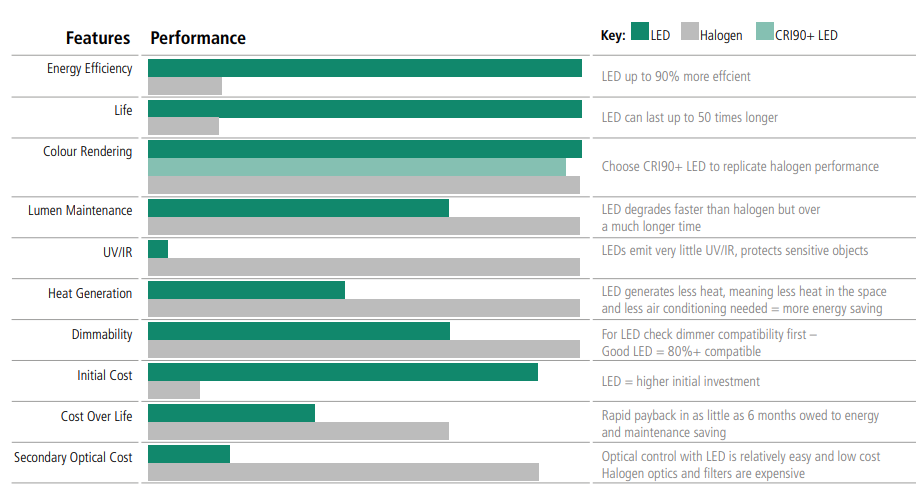
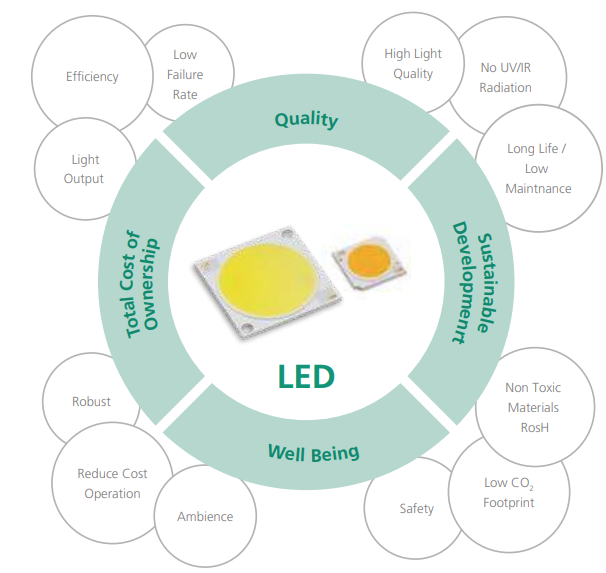
Adaptability and Light Fixtures: The adjustability of your chosen fixtures is critical, as it allows you to alter the direction and intensity of light to match the requirements of each artwork. This is especially relevant for artworks of different materials and textures, which might need raking light or frontal lighting. Moreover, consider the maintenance aspect of the fixtures; those allowing easy bulb replacement can save you time and effort in the long run.
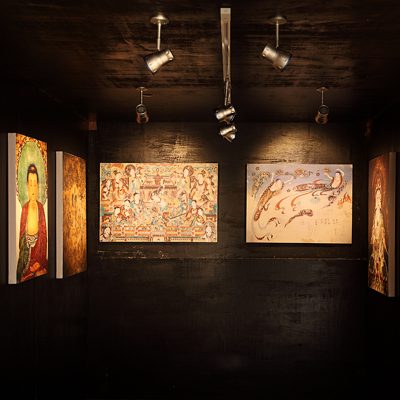
| Sensitivity | Recommended Lux Level | Materials |
|---|---|---|
| High | 50 Lux | Costumes, textiles, fur, dyed leather, prints, drawings, watercolors, stamps, manuscripts, colored photographs, miniatures, transparencies, unprimed thinly colored paintings on canvas |
| Medium | 100 Lux | Oil paintings, tempera paintings, lacquerware, plastics, wood, furniture, horn, bone, ivory, undyed leather, minerals, modern black and white photographs |
| Low | 300 Lux | Stone, ceramic, glass, metal |
Blending of Lights: Combining various light sources, such as ambient light, accent light, and task lighting, can result in a unique ambiance in your art gallery. This layered lighting approach can guide viewers’ focus towards specific parts of an artwork or the gallery, and create different effects that won’t overpower the artworks.
Energy Consumption: Energy efficiency should always be a priority. LED bulbs, in particular, offer significant cost savings over time due to their high lumens per watt ratio.
Design Aesthetics: While the main purpose of gallery lighting is to highlight the art, the fixtures themselves should also complement the overall design, architecture of the space, and the artwork being displayed. For instance, incandescent lights might be more suitable for older, classical artworks, while a modern sculpture might be best displayed under cool, blue-toned LED lights.
Color Rendering Index (CRI): CRI is a crucial metric that denotes how accurately a light source displays an object’s true colors compared to natural light. A higher CRI leads to more faithful color reproduction. For art galleries, it’s recommended to use lights with a CRI of 80-90+ to best showcase the artwork.
While traditional LEDs generate white light by merging blue light with a yellow phosphor—often rendering blues better than reds in the color spectrum—this can result in washed-out reds and skin tones. To overcome this, we advise using LEDs with a CRI greater than 90 for art galleries. This approach ensures the vibrancy of red tones, delivering a balanced and true-to-life color representation for all exhibits.
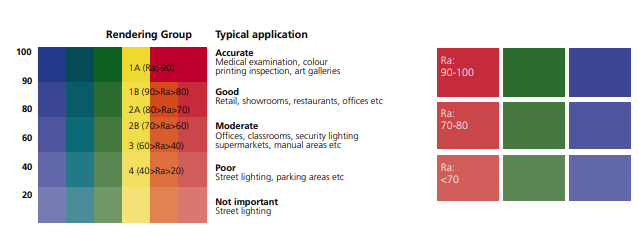
Color Temperature(K): The color temperature of an LED determines whether it emits a warm or cool light. Higher color temperatures result in a cooler light effect. For example, a cool white light typically has a color temperature of around 4000K, whereas a warmer light effect might have a color temperature of 2800K. The chosen color temperature can significantly impact not only the color appearance of an exhibit but also the mood conveyed to the visitor. A cooler white can impart a crisper, more modern feel to the exhibit, while a warmer color temperature, such as 1600K (akin to candlelight), can create a cozier atmosphere.
Thanks to the development of color-tunable LEDs, curators and designers now have greater versatility in crafting different moods. The same light source can be dimmed from the level of midday light (around 3000K) to the warmer, softer tones of evening light (around 1600K), all the while maintaining superior light quality and beam control.

Remember, in an art gallery, controlling the duration, intensity, and exposure time of light is paramount to protect the artworks from excessive light exposure. Employing light control measures like dimmers, timers, shades, and filters will help in achieving this balance.
4 Top Tips for Choosing the Perfect Art Gallery Lighting
Navigating the world of art gallery lighting can be overwhelming, particularly if you’re new to it. With so many factors to consider and decisions to make, it can feel like you’re trying to solve a complex puzzle. On top of that, budget constraints can often limit your choices. However, fear not. Here are three essential tips to guide your journey to find the ideal lighting solution for your gallery:
Inspect the Light Source and Quality: Always prioritize the quality and source of your light fixtures and bulbs. The type of light source can dramatically affect how your artworks are perceived. Don’t shy away from asking questions about the light quality these fixtures provide.
Understand the Energy Efficiency: Before making a purchase, discuss the energy consumption of the lighting options with the provider. You’re not just buying a product; you’re investing in its running costs over time. Choosing energy-efficient solutions, like LED lights, can lead to significant savings in the long run.
Value Quality Over Cost: It can be tempting to opt for cheaper alternatives, especially when operating on a tight budget. However, remember that your art deserves to be showcased in the best possible light. Investing in high-quality lighting can enhance the viewing experience and appreciation of your art, making it a worthwhile expenditure.
Avoid Incident Glare: Incident glare occurs when the reflection of the light source is visible on the painting, either due to the reflective nature of the medium used or because of protective glass covering the painting. Avoid this by carefully considering the placement of lighting equipment in relation to the viewer. Use of accessories like snoots, louvers, and baffles can help reduce glare. Ideally, lighting should come slightly from the side, especially for consistency when lighting multiple pieces. The general rule of thumb is to place fittings at a 25-40 degree angle from the downward vertical.
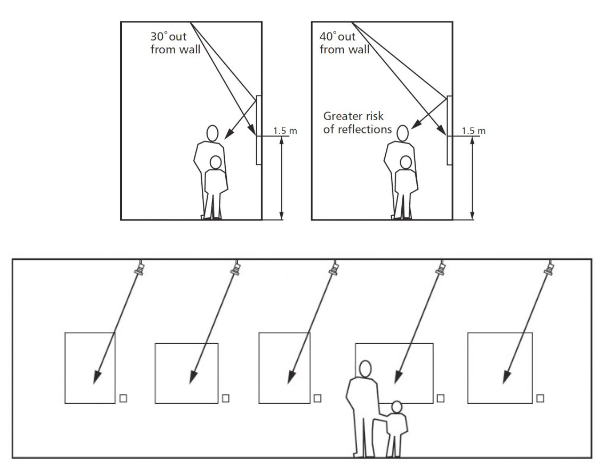
Remember, the goal is to illuminate your art in a way that complements its beauty and allows viewers to appreciate every detail. Take your time, do your research, and you’ll find the lighting solution that’s perfect for your gallery.
Conclusion
Choosing the right art gallery light fixtures is a fine balance between art and science. It requires an in-depth understanding of different light sources, their interactions with various art forms, and the influence they have on the viewer’s perception. It’s a careful choreography of light and shadow that not only showcases the best in every artwork but also enhances the overall aesthetic of the gallery space. Moreover, these choices must consider the long-term preservation of the artwork, ensuring that future generations can continue to appreciate their beauty and significance. It’s a complex task that necessitates knowledge, adaptability, a commitment to sustainability, and, most importantly, a profound appreciation for art.
